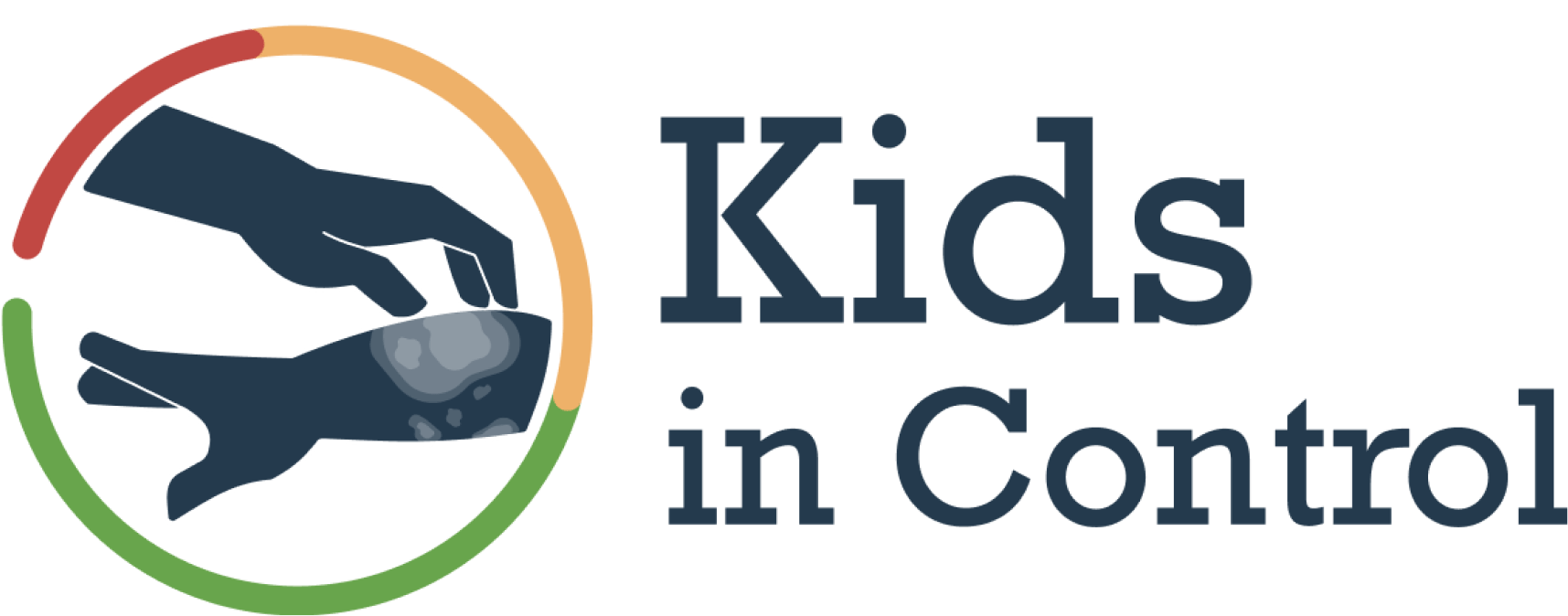Transforming the Itch-Scratch Cycle

















How to use the presentation
Before we get started let me show you around.


How to use the presentation
This button will take you back to the home page.


How to use the presentation
These tell you what part of the presentation you're in, red part 1, yellow part 2 and green part 3.


How to use the presentation
Use the arrows in the bottom right to move through the presentation.


How to use the presentation
Click this arrow to move forward.


Great job!


How to use the presentation
Great job!


How to use the presentation
How to use the presentation
Thats it you got it!


How to use the presentation
Looks like your ready to get started.


Click the next arrow to begin


Part 1
What is eczema?

Welcome!
Kids in Control is a programme to help children with eczema take control and manage their scratching. You'll find out more about...



Eczema and eczema treatments
How scratching makes eczema worse
Tips to help with itchy skin
Other children's stories about how they've coped with itchy skin
Help to take control of your scratching

What is Eczema?
Eczema is a condition that makes skin dry and itchy.
The skin can be dry and sometimes flaky.






What is Eczema?
Eczema can be different colours:
In lighter skin, eczema may look red.
In darker skin, eczema may look grey, purple or brown.



1 in every 5 children have eczema
Five million people in the UK have eczema
What is Eczema?
You are not alone!

"My eczema really annoyed me and I used to scratch all the time but now I know what I'm doing I scratch much less than I used to."
What is Eczema?






The skin barrier and eczema
Our skin is a natural barrier that stops things from getting into our bodies and keeps water in the skin.

The skin barrier and eczema
When you have eczema this barrier doesn't work as well. It lets water out which makes your skin dry.

The skin barrier and eczema
It also lets in things that irritate the skin, like soap. This can cause the skin to react, making it itchy and sore.



What is eczema?
Get control of eczema
Many people can feel confused about how to treat eczema. It can be hard to know what treatments to use and when as eczema can change over time.
There are 2 main treatments for eczema...



Get control of eczema
Both of these treatments are needed. This is because they help control eczema in different ways. Find out about each of these creams...



Moisturising creams
Emollients

Flare control creams
usually steroid creams

There are 2 main treatments for eczema...
Get control of eczema

You can keep control with
moisturising creams
Some people call these emollients

Get control of eczema
moisturising creams help to...
Most people with eczema will need to use moisturising creams every day.
Stop eczema flare-ups by keeping out things that may irritate the skin.
Make the skin soft by locking water in the skin.
Stop itching.
Reduce soreness.


Get control of eczema
You can get control with
flare control creams


Some people call these steroid creams
Get control of eczema
They treat sore and itchy skin.
What are steroid creams?
Most people with eczema will need to use flare control creams at some point.
This will be during flare-ups, usually for a few days or longer until the eczema is under control.




What is the 'KiCP'
K
i
C
P
What is the 'KiCP'
Kids
i
C
P
What is the 'KiCP'
Kids
in
C
P
What is the 'KiCP'
Kids
in
Control
P

What is the 'KiCP'
Kids
in
Control
Programme

What is the 'KiCP'
This 3 part programme will help you heal your skin by:



Helping you to reduce scratching and rubbing of your skin.
Understanding how to use your eczema treatments.
What is the 'KiCP'
Part 1
Get your skin care routine right. This means using emollient moisturisers every day to help dry skin and using flare control creams to treat eczema flare-ups.




What is the 'KiCP'
Part 2
Notice your scratching behaviour




What is the 'KiCP'
Part 3
Healing your skin by dealing with the itch and scratch at the same time




Does the programme work?
"It’s really hard to ignore the itch, even though I know it will be worse if I scratch it. I also know that if I start scratching I will break my skin and it will take longer to heal. Kids in Control helped me figure out what works to help control that itch."




Thanks for completing
Part 1
Go to Part 2

Part 2
What does scratching do to my skin
Noticing your Behaviour
What does scratching do to your skin?
Noticing your behaviour
This is because scratching makes your skin release chemicals. This makes you feel even more itchy, which makes you want to scratch more!
This is called the itch-scratch cycle.
Scratching and rubbing can worsen the itch.

Scratching can also damage your skin. This can make it bleed or let bugs in so it can get infected. Damaged skin also lets water escape more easily which can cause dryness.
Damaged skin can feel itchy while it is healing. This can add to the itch-scratch cycle.
What does scratching do to your skin?
Noticing your behaviour

Does the programme work?
"As I got older I found what works to help control that itch."



Itch is the sensation
What we feel
This makes you want to scratch.
Scratching is the behaviour
What we do
It is any touching of our skin that we do again and again, rubbing and picking is the same.
What does scratching do to your skin?
Noticing your behaviour



Noticing your behaviour
Worsens eczema
Adds chronic eczema to acute eczema: the skin gets thicker and more inflamed – the face, neck and hands are the easiest to scratch - so have the highest chance of getting chronic eczema
What does scratching do?
Prevents healing
Can introduce infection


Noticing your behaviour

Itch and scratching do not always go together!
A vicious cycle is formed. For your skin to heal we need to treat all parts of the cycle.
The itch scratch cycle
Noticing your behaviour


Damaged
skin barrier





Noticing your behaviour


Irritants / Allergens

Damaged
skin barrier





Noticing your behaviour


Irritants / Allergens

Inflammation

Damaged
skin barrier





Noticing your behaviour


Irritants / Allergens


Itch

Inflammation
Damaged
skin barrier





Noticing your behaviour

Damaged
skin barrier

Irritants / Allergens



Scratching

Inflammation
Itch





Breaking the cycle
Scratching can become a habit so we need to work on learning new ways to manage the itch instead of scratching.
This will help break the cycle of itching and scratching.







The first step is to start noticing when we scratch.
This helps us to:
Learn why, when and where you scratch.
Interrupt your scratching.
Refocus.
Notice your scratching Breaking the cycle







insert video
Record your scratching Breaking the cycle



Twice a week and for one hour at the weekend.
Record your scratching Breaking the cycle
A fixed period after school.
Twice a week for an hour at school.



When to record:
As soon as you notice you feel itchy and start scratching you should record it as a scratch.
Record your scratching Breaking the cycle

A scratch can involve actually scratching with your nails, rubbing against something else or using something against your skin to scratch it (e.g. a hairbrush or comb).



Record your scratching Breaking the cycle
When you notice that you start to scratch you should use the counter on your mobile or the clicker counter to make a note of this in your booklet.


Record your scratching Breaking the cycle
If you scratch one part of your body once, this is one scratch. If you scratch another part of your body this is a 2nd scratch.





Scratch arm = 1 scratch
Scratch arm + leg = 2 scratches
Scratch arm + leg + chest = 3 scratches
Record your scratching Breaking the cycle
In your booklet you will have space to record how many times you scratch and the situation you were in.
This helps you understand about why you might scratch. For example...



Record your scratching Breaking the cycle
Some people scratch more when they feel stressed and are doing homework.


Record your scratching Breaking the cycle
Some people scratch more when they watch television because they may be bored.


Record your scratching Breaking the cycle
Some people scratch more when in bed because they are worrying about things.



Record your scratching Breaking the cycle
When we figure out why you scratch we can help you to reduce the scratching in these times.





Record your scratching Breaking the cycle
If you scratch when you are stressed...
try doing something to relax.




Record your scratching Breaking the cycle
If you scratch when you are watching television, this may be a sign that you are bored...
try doing something else with your hands.

Record your scratching Breaking the cycle
If you scratch when you are feeling angry...
try doing something that makes you calm.




Record your scratching Breaking the cycle
If you scratch when you feel down in the dumps...
try doing something that makes you feel happy.

Record your scratching Breaking the cycle
Once you know the times and reasons you scratch you can change what you do.
The next part will go through some ideas!






Thanks for completing Part 2
Go to Part 2

Part 3
Changing Behaviour
Changing behaviour

Feeling itchy


Changing behaviour

Feeling itchy


Scratching
Changing behaviour

Feeling itchy

Scratching

Damage to your skin


Changing behaviour
Activities to help you change your behaviour


Changing behaviour
Squeezing the lemons activity


Changing behaviour
1) Make a fist for 15 seconds
(imagine you are squeezing lemons and the juice is running through your fingers).

Changing behaviour
2) Think about a happy memory or do some deep breathing while 'squeezing the lemons'.







Changing behaviour
3) When you're done - Are you still feeling itchy?




Changing behaviour
4) If you are, repeat the squeezing the lemons activity.

Changing behaviour
5) Keep going until the itchy feeling goes away.


Changing behaviour
Claws into paws activity


Changing behaviour
You can also think of putting your nails away by making a fist or imagining you are like a cat;

Turn your claws in into paws




Changing behaviour


You can also think of putting your nails away by making a fist or imagining you are like a cat;
Turn your claws in into paws







Changing behaviour
Deep breathing activity
To help you relax:


Changing behaviour
Take a deep breath in through your nose and push it down into your tummy.



Changing behaviour
Then hold it for 3 seconds.







Changing behaviour
Then breathe out of your mouth slowly.




Changing behaviour
Trace your hand activity


Changing behaviour
You can use your hand to focus your breathing.


Changing behaviour
Put one hand up in front of you.


Changing behaviour
Use a finger on your other hand to trace around it.


Changing behaviour


As you go up each finger breathe in slowly...
Changing behaviour


As you go up each finger breathe in slowly...
and as you go down the finger breathe out slowly.
Changing behaviour


As you go up each finger breathe in slowly...
and as you go down the finger breathe out slowly.
Changing behaviour


As you go up each finger breathe in slowly...
and as you go down the finger breathe out slowly.
Changing behaviour


As you go up each finger breathe in slowly...
and as you go down the finger breathe out slowly.
Changing behaviour


As you go up each finger breathe in slowly...
and as you go down the finger breathe out slowly.
Changing behaviour


As you go up each finger breathe in slowly...
and as you go down the finger breathe out slowly.
Changing behaviour


As you go up each finger breathe in slowly...
and as you go down the finger breathe out slowly.
Changing behaviour
Positive thinking activity


To help when you feel down
Changing behaviour
Think about a happy memory or a place that makes you feel good - like the beach.





Changing behaviour
Sing a song or listen to some music.






Changing behaviour
Dance...



Jump up and down...
or play catch.
Changing behaviour
Distract your hands


Changing behaviour
If you feel bored or need to do something with your hands use a fidget toy such as a...
Fidget spinner
Stress ball
Blue tack
Fidget popper




Changing behaviour
Keep doing this until the feeling to scratchy feeling goes away.
Fidget spinner
Stress ball
Blue tack
Fidget popper




Does the programme work?
See how Rukshana found a fidget toy helpful.

Changing behaviour
5,4,3,2,1 activity





Changing behaviour
Thinking about each of your 5 senses can help you to stop thinking about your itch.
Lets see what you can see, touch, hear, smell, and taste.



Changing behaviour
5 Things you can see.

4 things you can touch.
3 things you can hear.
2 things you can smell.
1 thing you can taste.







Changing behaviour
5 Things you can see.

4 things you can touch.
3 things you can hear.
2 things you can smell.
1 thing you can taste.







Changing behaviour
5 things you can see.

4 things you can touch.
3 things you can hear.
2 things you can smell.
1 thing you can taste.







Changing behaviour
5 Things you can see.

4 things you can touch.
3 things you can hear.
2 things you can smell.
1 thing you can taste.







Changing behaviour
5 Things you can see.

4 things you can touch.
3 things you can hear.
2 things you can smell.
1 thing you can taste.







Changing behaviour
Now think about when you scratch,
Situations that make us scratch
What can you do to stop yourself scratching?
Try some of these ideas and see if they help.



Changing behaviour
When trying out these ideas to stop you from scratching, it is important to still notice how often you are actually scratching.




Continue to notice
Changing behaviour
Use your counter app, a clicker counter or a chart to record how many times you scratch while you try some of the ideas we have discussed.
Why?...
-
Helps you to check how well you are doing.
-
Help you to see what works and what doesn't work.
-
Motivates you to keep going.




Continue to notice
Reminders for parents
Recognise when your child manages a tricky situation well.
Do not draw attention to scratching: ‘no comment’ is the key.
Do not expect them to suddenly stop scratching; it takes time to change behaviours.
If you notice your child scratching, you can move the hand that is scratching and give them a fidget toy or a hug!
Also give lots of praise when they don’t scratch. This will encourage them.
Little steps deserve praise as they lead to big steps.




Reminders for you
Remember...





Don’t worry if sometimes you still scratch.
Notice the times you don't scratch instead.
Keep a chart of how well you are doing.
Let others know how you are doing.

You are in control not your itchy skin



Thanks for completing
Part 3
Go to Part 2

KIC (legacy) Part 1,2,3 - Kids in control presentation
By KidsInControl
KIC (legacy) Part 1,2,3 - Kids in control presentation
- 419




